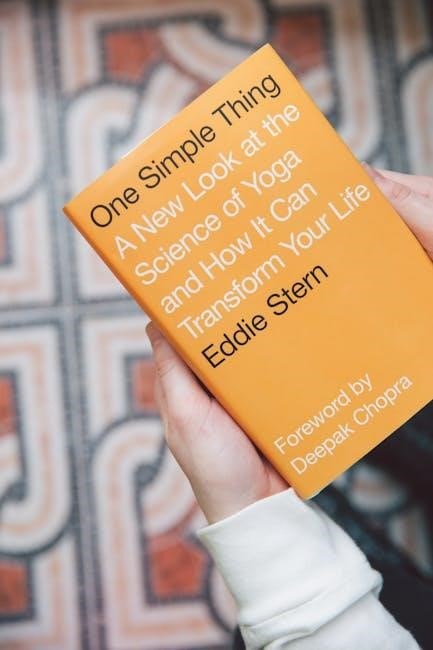Powerlifting program PDFs offer structured routines, progression strategies, and nutrition tips to enhance strength training. Popular options like Kizen 6 Week Bench and Juggernaut 2.0 provide detailed workout plans.
1.1 What is a Powerlifting Program?
A powerlifting program is a structured plan designed to improve strength in the three main lifts: squat, bench press, and deadlift. These programs are tailored to individual goals, experience levels, and training preferences. They typically include detailed workout schedules, sets, reps, and weights, often incorporating periodization strategies to optimize progress. Many programs, such as the Kizen 6 Week Bench Peaking Program or Juggernaut 2.0, also provide guidance on accessory exercises, nutrition, and recovery. Whether for beginners or advanced lifters, powerlifting programs aim to enhance overall strength, technique, and competition readiness. They are available in PDF formats, making them easily accessible and customizable for personal use.
1.2 Benefits of Using a Powerlifting Program PDF
Using a powerlifting program PDF provides a structured and organized approach to strength training. It offers clear workout schedules, progression strategies, and nutrition advice, ensuring consistent improvement. PDFs are easily accessible and customizable, allowing lifters to tailor programs to their goals and experience levels. They often include detailed guidance on accessory exercises, recovery techniques, and periodization, which are crucial for avoiding plateaus. Many programs, like the Kizen 6 Week Bench Peaking Program, also offer theoretical explanations, helping users understand the rationale behind the training. This makes PDFs a valuable resource for both beginners and advanced lifters, providing a comprehensive roadmap to achieving strength and competition readiness.
1.3 How to Choose the Right Powerlifting Program
Choosing the right powerlifting program involves assessing your experience level, strength goals, and training preferences. Beginners should opt for programs like TSA’s 16-week plan, which focuses on building foundational strength. Intermediate lifters may benefit from programs such as Juggernaut 2.0, offering higher volume and progression strategies. Advanced lifters can explore peaking programs like Kizen 6 Week Bench for competition prep. Consider whether the program aligns with your goals, such as strength gains or hypertrophy. Consider the program’s structure, including periodization strategies and accessory exercises. Additionally, ensure the program provides clear guidance on nutrition and recovery. Finally, seek programs with community support or resources, such as Lift Vault, to aid in your journey.
Types of Powerlifting Programs
Powerlifting programs vary by experience level, from beginner plans like TSA’s 16-week to advanced options such as Kizen 6 Week Bench for competition prep.
2.1 Beginner Powerlifting Programs
Beginner powerlifting programs are designed to build foundational strength and technique in the squat, bench press, and deadlift. These programs typically last 12-16 weeks, focusing on progressive overload and consistency. Popular options include TSA’s 16-week beginner program, which emphasizes proper form and gradual strength increases. Another well-regarded program is Wendler’s 5/3/1, which uses percentage-based training to ensure steady progress. These programs often include detailed workout schedules, nutrition advice, and recovery tips, making them ideal for those new to powerlifting. They prioritize simplicity and consistency, helping lifters establish a strong base before advancing to more complex training. This structured approach ensures beginners can safely and effectively improve their strength and technique over time.
2.2 Intermediate Powerlifting Programs
Intermediate powerlifting programs are tailored for lifters with a solid foundation in the squat, bench press, and deadlift. These programs typically last 12-16 weeks, focusing on strength progression and technique refinement. Popular options include the Juggernaut 2.0 and TSA Intermediate programs, which incorporate periodization strategies to avoid plateaus. These programs often blend strength-focused work with hypertrophy exercises to enhance muscle growth and power. They may also introduce undulating periodization, alternating between high-intensity and volume-focused phases. Intermediate programs emphasize understanding one’s weaknesses and adjusting training accordingly. Accessories like pull-ups and lunges are commonly included to address imbalances. Recovery techniques and nutrition guidance are also highlighted to support increased training demands. These programs help bridge the gap between foundational strength and advanced powerlifting goals.
2.3 Advanced Powerlifting Programs
Advanced powerlifting programs are designed for experienced lifters seeking to maximize strength and refine technique. These programs often span 16-24 weeks, incorporating complex periodization strategies like block periodization. They focus on peaking for competitions, with detailed plans for deload weeks and recovery. Advanced programs may include high-intensity techniques such as low-volume, high-intensity training or specialized exercises targeting weak points. Accessories like weighted pull-ups and deficit deadlifts are common. Recovery techniques, such as contrast showers and mobility work, are emphasized to maintain performance. Programs like the Advanced Powerlifting Program PDF offer tailored lifting charts and schedules, ensuring lifters can push their limits safely. These programs require a deep understanding of one’s body and training history, making them ideal for seasoned athletes aiming to break through plateaus and achieve elite-level strength.

Key Components of a Powerlifting Program

A powerlifting program includes main lifts (squat, bench, deadlift), assistance exercises, periodization strategies, and nutrition/recovery guidelines. These elements ensure balanced strength development and competition readiness.
3.1 The Main Lifts: Squat, Bench Press, and Deadlift

The squat, bench press, and deadlift are the cornerstone exercises in any powerlifting program. These lifts target major muscle groups and are essential for building overall strength. The squat develops leg and core strength, while the bench press focuses on chest, shoulders, and triceps. The deadlift works the entire body, emphasizing posterior chain strength. In most programs, these lifts are performed with a focus on progressive overload, increasing weight or volume over time. They are typically structured with specific sets, reps, and rest periods, such as 3-5 sets of 1-5 reps for strength gains. Accessory exercises often support these main lifts by addressing weaknesses and improving technique. Proper form and consistency are crucial for long-term progress and injury prevention.
3.2 Assistance Exercises for Strength and Hypertrophy
Assistance exercises play a vital role in powerlifting programs by targeting specific muscle groups to improve strength and hypertrophy. Exercises like pull-ups, dips, lunges, and leg press help address weaknesses in the main lifts. For example, pull-ups enhance lat strength, benefiting the deadlift, while dips improve tricep and chest development, aiding the bench press. These exercises are typically performed with higher volumes, such as 3-4 sets of 8-12 reps, to promote muscle growth. Hypertrophy-focused exercises like leg curls and face pulls are also included to balance strength gains with muscle development. Incorporating these exercises ensures well-rounded progress and supports the main lifts, making them a cornerstone of any effective powerlifting program.
3.3 Periodization Strategies
Periodization strategies in powerlifting programs involve organizing training into specific phases to optimize strength gains and prevent overtraining. Common approaches include block periodization, where focus shifts between strength and hypertrophy, and undulating periodization, which alternates intensity and volume weekly. Linear periodization progressively increases intensity over time, while daily undulating periodization varies rep ranges and intensity daily. These strategies help athletes peak for competitions and sustain long-term progress. For example, a 16-week program might dedicate 4 weeks to foundation building, followed by 4 weeks of strength focus, and finish with a peaking phase. Proper periodization ensures balanced development and avoids plateaus, making it a cornerstone of effective powerlifting programming.
3.4 Nutrition and Recovery Guidelines
Nutrition and recovery are critical components of any powerlifting program, ensuring optimal performance and muscle repair. A balanced diet rich in protein, carbohydrates, and healthy fats supports muscle growth and energy levels. Hydration is equally important, with recommendations to drink plenty of water daily. Sleep plays a vital role in recovery, with 7-9 hours per night being ideal. Additionally, techniques like foam rolling, stretching, and deload weeks help prevent overtraining and injury. Many programs emphasize the importance of tracking macronutrient intake and adjusting caloric consumption based on training phases. Recovery strategies also include rest days, active recovery, and stress management to maintain overall well-being. Proper nutrition and recovery practices are essential for sustaining progress and achieving long-term strength goals in powerlifting.
Popular Powerlifting Programs Available as PDFs
Popular powerlifting programs like Kizen 6 Week Bench, Juggernaut 2.0, Jacked and Tan 2.0, Wendler 5/3/1, and TSA programs are widely available as downloadable PDFs, offering structured training plans for various goals.
4.1 Kizen 6 Week Bench Peaking Program
The Kizen 6 Week Bench Peaking Program is a popular choice for lifters aiming to maximize their bench press strength. Designed for intermediate to advanced lifters, this program focuses on structured workouts to peak bench press performance. It incorporates dynamic effort and maximum strength training, with detailed explanations in the accompanying PDF. The program is part of a larger 16-week powerbuilding plan and is available for free, making it accessible to many. Silent Mikke, Bart Kwan, and Omar Isuf collaborated on this program, ensuring a well-rounded approach to bench press development. The PDF provides theoretical insights, helping users understand the methodology behind the training. This program is ideal for those seeking a focused, results-driven bench press routine.
4.2 Juggernaut 2.0 Powerbuilding Program
The Juggernaut 2.0 Powerbuilding Program is a comprehensive training plan designed for lifters seeking to build both strength and muscle mass. Created by Silent Mikke, Bart Kwan, and Omar Isuf, this program is part of a larger 16-week structure, with the first four weeks available for free as a detailed PDF. It incorporates undulating periodization, alternating between strength-focused and hypertrophy-oriented phases. The program is suitable for all experience levels, from beginners to advanced lifters, and includes a mix of compound movements and accessory exercises. The PDF provides a clear framework, making it easy to follow and adapt. This program is ideal for those looking to balance powerlifting performance with muscle growth, offering a well-rounded approach to training.
4.3 Jacked and Tan 2.0 Program
The Jacked and Tan 2.0 Program is a high-intensity powerlifting and hypertrophy-focused training plan designed for lifters seeking significant strength and muscle gains. It combines maximal effort strength training with high-volume hypertrophy work, making it ideal for those who enjoy challenging workouts. The program requires lifters to identify their weaknesses, both in strength and aesthetics, to tailor exercise selection effectively. Known for its demanding nature, it is often described as “masochistic” due to its intense structure. The program is well-suited for intermediate to advanced lifters who can handle higher volumes and are committed to consistent progression. It offers a balanced approach to building both powerlifting performance and overall muscle development, making it a popular choice among dedicated trainees.
4.4 Wendler 5/3/1 Program
The Wendler 5/3/1 Program is a renowned powerlifting system designed by Jim Wendler, focusing on progressive overload and strength development. It operates on a 4-day training split, targeting the squat, bench press, deadlift, and overhead press. Each lift follows a specific progression cycle, using percentages of the lifter’s 1RM to determine weights. The program is known for its simplicity and effectiveness, making it suitable for both beginners and advanced lifters. Over time, lifters have reported significant strength gains, such as improvements in squat, bench, and deadlift numbers. The 5/3/1 method emphasizes consistency and gradual progression, allowing athletes to build strength sustainably. Its structured approach and adaptability have made it a popular choice among powerlifters seeking long-term development.
4.5 TSA Intermediate and Beginner Programs
TSA offers both intermediate and beginner powerlifting programs, designed to cater to different experience levels. The TSA Intermediate Program is a 9-week plan, ideal for lifters with some experience, focusing on strength progression and technique refinement. The TSA Beginner Program spans 16 weeks, providing a comprehensive foundation for new powerlifters. Both programs include detailed training schedules, exercise variations, and nutritional advice. They emphasize gradual progression, ensuring lifters build strength and confidence over time. These programs are structured to help athletes transition smoothly from foundational training to more advanced powerlifting routines. Available as PDFs, they are accessible and easy to follow, making them popular choices for those seeking structured guidance in their powerlifting journey.

Creating a Custom Powerlifting Program
Custom programs assess strength levels, set realistic goals, and track progress. They tailor training to individual needs, ensuring periodized plans for optimal results and sustained growth.
5.1 Assessing Current Strength Levels
Assessing current strength levels is crucial for creating an effective custom powerlifting program. This involves determining one-rep max (1RM) for the squat, bench press, and deadlift. Many programs, such as the Wendler 5/3/1, use percentage-based training, which requires accurate 1RM values. For instance, the Kizen 6 Week Bench Peaking Program and Juggernaut 2.0 emphasize the importance of understanding current strength to tailor workouts. Additionally, tracking progress over time helps in adjusting the program. Some lifters use RPE (Rate of Perceived Exertion) alongside 1RM to gauge effort and avoid overtraining. Accurate assessments ensure that the program is challenging yet sustainable, promoting steady progress and minimizing injury risks. Regular testing and adjustments are key to long-term success.
5.2 Setting Realistic Goals and Milestones

Setting realistic goals and milestones is essential for a successful powerlifting program. Start by identifying short-term and long-term objectives, such as increasing your one-rep max (1RM) or mastering proper form. Programs like the Kizen 6 Week Bench Peaking Program and Wendler 5/3/1 emphasize progressive overload, helping you gradually increase strength. Break larger goals into smaller, achievable milestones, such as adding 5-10 pounds to your lifts every 4-6 weeks. Track progress through regular testing and adjustments. A well-structured plan, like the TSA Intermediate Program, ensures steady improvement. Stay consistent, and celebrate small victories to maintain motivation. A coach or experienced lifter can also provide guidance to keep you on track. Realistic goals ensure sustainable progress and prevent burnout.
5.3 Tracking Progress and Adjustments
Tracking progress is crucial for optimizing a powerlifting program. Use a workout log or spreadsheet to record lifts, weights, and reps. Programs like Kizen 6 Week Bench and Juggernaut 2.0 emphasize consistent tracking to monitor strength gains. Regularly test one-rep maxes (1RM) to assess progress. Adjustments may involve increasing volume, intensity, or modifying exercises based on performance. Recovery and nutrition should also be evaluated to ensure optimal results. For example, the TSA Intermediate Program incorporates deload weeks to prevent burnout. Stay flexible and make data-driven decisions to refine your training. Tracking progress ensures accountability and helps maintain momentum toward your goals. Adjustments keep the program effective and tailored to your needs.
Training Schedules and Templates

Training schedules and templates organize workouts, ensuring consistency. Popular options include 4-day and 5-day splits, with sample plans like TSA Intermediate and Juggernaut 2.0. These templates distribute main lifts like squats, bench presses, and deadlifts across the week, often with dedicated rest days. Many programs, such as the 6-week bench peaking program, include video demos for proper form. Templates also incorporate accessory exercises and recovery techniques, providing a balanced approach to strength training. These structured plans help lifters stay focused and track progress effectively, whether following a 4-day or 5-day schedule.
6.1 4-Day Training Split
A 4-day training split is a popular structure for powerlifters, allowing for focused development of the squat, bench press, and deadlift. Typically, the program is divided into four days: Day 1 for squat and accessory work, Day 2 for bench press and related exercises, Day 3 for deadlift and lower-back recovery, and Day 4 for overhead press or additional accessory work. This split ensures each main lift is trained with adequate frequency and recovery time. Many PDF programs, such as the TSA Intermediate and Juggernaut 2;0, incorporate this structure, providing detailed sets, reps, and rest periods. The 4-day split balances intensity and volume, making it suitable for both intermediate and advanced lifters. It also allows for flexibility, enabling lifters to customize based on their strengths and weaknesses.

6.2 5-Day Training Split
A 5-day training split is a common approach in powerlifting programs, allowing for dedicated focus on each main lift and accessory work. Typically, the program is structured with one day per main lift: squat, bench press, and deadlift, with two additional days for accessory exercises and recovery. This split enables higher training volume and specificity, making it ideal for intermediate to advanced lifters. Many PDF programs, such as the TSA Intermediate and Jacked and Tan 2.0, incorporate this structure, providing detailed workout plans with sets, reps, and rest periods. The 5-day split promotes consistent progress and recovery, ensuring lifters can maximize their strength gains while minimizing overtraining. It’s a versatile option for those seeking a balanced yet intense training regimen.
6.3 Sample Weekly Training Plan
A sample weekly training plan in a powerlifting program PDF typically outlines a structured schedule with specific days for main lifts, accessory work, and recovery; For example, Monday might focus on the squat, Wednesday on the bench press, and Friday on the deadlift. Each main lift day includes variations or accessory exercises to target weaknesses. Accessory days, often on Tuesdays and Thursdays, might involve hypertrophy work like pull-ups, rows, and lunges. Recovery days, such as Saturdays, could include light cardio or mobility work. Sundays are often reserved for rest or active recovery. This balanced approach ensures consistent progress while allowing for adequate recovery. Many programs, like the TSA Intermediate and Jacked and Tan 2.0, provide detailed weekly templates in their PDFs to guide lifters effectively.

Accessories and Recovery
Accessories like pull-ups and lunges target muscle imbalances, while recovery techniques such as foam rolling and stretching enhance mobility and reduce muscle soreness for optimal performance.
7.1 Common Accessory Exercises
Accessory exercises are crucial for addressing muscle imbalances and enhancing overall performance. Pull-ups, lunges, and core workouts are popular choices, targeting specific muscle groups. These exercises improve stability and strength, reducing injury risk. Many powerlifting program PDFs include variations like incline bench press for upper chest development and deficit deadlifts to strengthen the posterior chain. Accessory work can be tailored to individual needs, ensuring a well-rounded approach to strength training; By incorporating these exercises, lifters can support their main lifts and achieve better overall results in their powerlifting journey.
7.2 Recovery Techniques for Powerlifters
Recovery is essential for optimizing strength and preventing injuries. Common techniques include foam rolling, stretching, and massage to improve muscle flexibility and reduce soreness. Deload weeks, where training intensity is reduced, allow the body to recover fully. Nutrition plays a key role, with adequate protein intake and hydration supporting muscle repair. Sleep is also critical, as it aids in muscle recovery and overall performance. Additionally, techniques like ice baths and compression garments can help reduce inflammation and promote healing. Proper recovery strategies ensure powerlifters can train consistently and achieve long-term progress in their programs.
Advanced Topics in Powerlifting Programming
Explore block periodization and peaking strategies to maximize strength gains and competition readiness, ensuring optimal performance through structured training phases and precise planning.
8.1 Block Periodization
Block periodization divides training into focused phases, each targeting specific goals like strength, hypertrophy, or competition prep. It optimizes adaptation by dedicating blocks to foundational strength, intensity, and peaking. This approach prevents overtraining by cycling volume and intensity, ensuring lifters peak for competitions. Programs like the 16-week TSA intermediate program use block periodization effectively, balancing progression and recovery. Each phase builds on the previous, enhancing overall performance. This structured method is ideal for advanced lifters seeking precise control over their training cycle, ensuring maximum results when it matters most.
8.2 Peaking Strategies for Competition
Peaking strategies in powerlifting programs are designed to maximize strength for competition. These strategies often involve tapering volume and intensity in the final weeks to ensure optimal performance. Programs like the Kizen 6 Week Bench Peaking Program and TSA Intermediate Program incorporate deload weeks to allow recovery while maintaining strength. Techniques include reducing accessory work, focusing on main lifts, and using RPE (Rate of Perceived Exertion) to fine-tune efforts. Proper peaking ensures lifters are fresh and strong for meet day, avoiding overtraining. These strategies are crucial for competitors aiming to achieve personal records and excel on the platform, making them a cornerstone of advanced powerlifting programming.

Resources and Communities
Lift Vault offers a wide range of free powerlifting programs, while Reddit communities provide valuable discussions and support for lifters of all levels.
9.1 Lift Vault and Other Program Repositories
Lift Vault is a premier destination for powerlifting enthusiasts, offering a vast library of free program PDFs, including detailed workout plans and video tutorials. It caters to all experience levels, from beginners to advanced lifters, providing customizable options to suit individual goals. The platform also features community-driven content, fostering engagement and knowledge sharing among users. Additionally, other repositories like Powerlifting to Win and Ben Pollack’s programs offer specialized training regimens. These resources are invaluable for those seeking structured guidance, whether for competition prep or personal strength development. With such diverse options, lifters can easily find a program that aligns with their specific needs and aspirations.
9.2 Online Communities and Forums
Online communities and forums are vital resources for powerlifters, offering support, advice, and access to program PDFs. Platforms like Reddit’s r/powerlifting and Facebook groups dedicated to strength training provide spaces for lifters to share experiences and gain insights. These communities often feature discussions on various programs, including Kizen, Juggernaut, and TSA, with members sharing their progress and tips. Additionally, specialized forums cater to specific demographics, such as female and gender-non-binary lifters, fostering inclusivity and tailored advice. Many of these communities also host free resources, including downloadable PDFs, video tutorials, and expert guidance, making them indispensable for anyone seeking to enhance their powerlifting journey. Engagement in these forums can significantly accelerate learning and improvement.
Powerlifting program PDFs are invaluable resources for lifters of all levels, offering structured guidance to enhance strength and technique. They provide detailed workout plans, nutrition advice, and recovery strategies, ensuring a holistic approach to training. Whether you’re a beginner or an advanced lifter, these PDFs cater to diverse goals, from competition prep to general strength building. Consistency and patience are key to seeing results, as progress in powerlifting is gradual. By leveraging these resources and staying committed, lifters can optimize their performance and achieve their full potential. The availability of free and customizable programs makes it easier than ever to embark on a successful powerlifting journey.






























